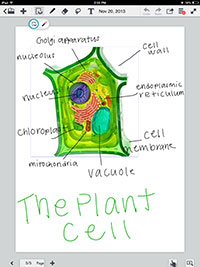Note-Taking App Upgrade Released for Apple, Android and Windows 8

Note Anytime 2.0 |
MetaMoJi has released version 2.0 of its Note Anytime app for Apple, Android and Windows 8 devices.
The note-taking and productivity app allows users to write directly on PDF documents, take detailed notes on notepads, perform vector graphing and zoom up to 50x. The app also features handwriting recognition, predictive text in 13 languages, cloud storage and Evernote and Dropbox compatibility.
New upgrades include:
- User interface improvements. Based on research and feedback from users, Note Anytime's UI has been updated for more intuitive and flexible navigation.
- Digital Cabinet. All or selected folders can be synced to Digital Cabinet, a cloud document-management service. Users cam search and select notes in Digital Cabinet and register a note as a template, and can specify auto sync intervals to ensure that notes are backed up and accessible online and across devices.
- Shared Drive. Users can share notes with others by inviting them via e-mail to join the Shared Drive.
- Text conversion. Note Anytime detects where handwritten letters are in a note and converts them to digital text, even when they're outside text boxes. (This feature requires the mazec handwriting conversion add-on.)
- Spell check. A new built-in spell checker allows users to find and replace text within notes and easily correct typos.
- Enhanced formatting. A number of different text styles have been added, including the option to add bullets*, increase/decrease indents*, change text box background colors and italicize text. New pen styles include highlighters, fountain pens and blushes. Additional inks, premium items, papers and note styles are also available. (*Available with paid version.)
- Import features. More file types can now be imported to Note Anytime, including image and text files as well as Microsoft Office files via Google Drive.
- Cloud integration. A new menu item provides Google Drive integration for file sharing and storage. Other "send to cloud" options include Evernote, Dropbox, Twitter, Facebook and Tumblr.
- Password protection. Users have the option to password protect their notes.
More information is available at the Note Anytime site.
About the Author
Rhea Kelly is editor in chief for Campus Technology, THE Journal, and Spaces4Learning. She can be reached at [email protected].